In the competitive landscape of modern commerce, a successful retail operation hinges not only on sales and customer experience but fundamentally on protection. Shrinkage—the term encompassing losses due to theft, fraud, and administrative errors—can severely erode profit margins, making proactive security measures essential. For any business owner, investing in a high-quality shop security system is not merely an expense; it is a critical investment in business continuity and future profitability.
This comprehensive guide delves into the necessary components, advanced technologies, and strategic implementation required to safeguard your assets, employees, and customers effectively. Whether you are running a small boutique or managing a sprawling department store, understanding the architecture of a modern security store solution is the first step toward true peace of mind.
Contents
- 1 Why Comprehensive Security is Non-Negotiable for Retail
- 2 Understanding the Core Components of a Modern Shop Security System
- 3 Tailoring Security to Your Retail Environment
- 4 Advanced Technologies Driving Modern Shop Security
- 5 The Implementation Process: From Assessment to Activation
- 6 Maximizing ROI: Beyond Loss Prevention
- 7 Future-Proofing Your Investment in Shop Security
- 8 Conclusion: Securing Your Success with the Right Shop Security System
Why Comprehensive Security is Non-Negotiable for Retail
The threats facing the retail environment are complex and constantly evolving. From organized retail crime (ORC) hitting headlines to internal theft, which often accounts for a significant portion of losses, retailers must adopt multi-layered defense strategies. A generic setup simply won’t suffice; you need a strategic, integrated shop security system tailored to your unique vulnerabilities.
Loss prevention is about creating layers of deterrence and detection. Deterrence discourages potential criminals from targeting your location, while detection ensures that if an incident does occur, you have the evidence necessary for prosecution and insurance claims. A proper security alarm system for shop environments integrates these two principles seamlessly.
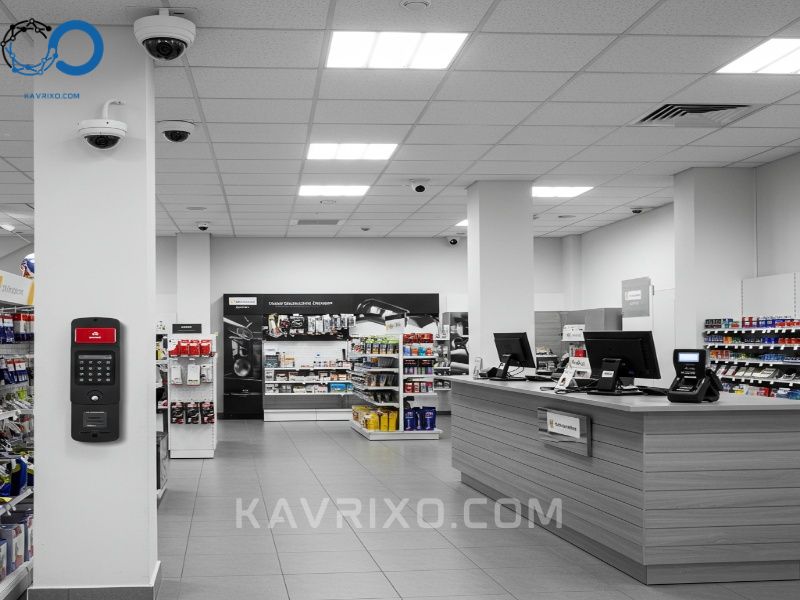
Understanding the Core Components of a Modern Shop Security System
A truly effective shop security system is not a single product but an ecosystem of interconnected shop security equipment. These components work together to provide 24/7 coverage, both when the store is open and during off-hours.
Video Surveillance (CCTV) – The Eyes of Your Operation
CCTV (Closed-Circuit Television) remains the backbone of any serious retail security strategy. However, modern systems have evolved far beyond grainy, analog footage. Today’s systems offer high-definition, internet-enabled monitoring that plays a crucial role in prevention, investigation, and operational oversight.
Camera Selection and Placement Strategy
Choosing the right cameras is vital. For general surveillance, dome cameras are often preferred due to their discreet nature and wide viewing angles. For external perimeter monitoring and large areas like stockrooms, bullet cameras offer greater range and visibility.
- High Resolution (4K/8MP): Clear identification is paramount. High-resolution cameras ensure that facial features, license plates, and product details are discernible, crucial for evidence gathering.
- Low-Light Performance: Cameras must maintain clarity in poor lighting conditions, particularly in storage areas or after closing hours. Infrared (IR) capability is a necessity.
- Strategic Positioning: Cameras should cover all entry/exit points, high-value product displays, cash wraps, and blind spots. Crucially, they should be placed high enough to prevent tampering but low enough to capture clear identifying features.
A sophisticated system allows management to remotely access live feeds and archived footage, providing essential flexibility, whether they are monitoring a single security store or an entire chain.
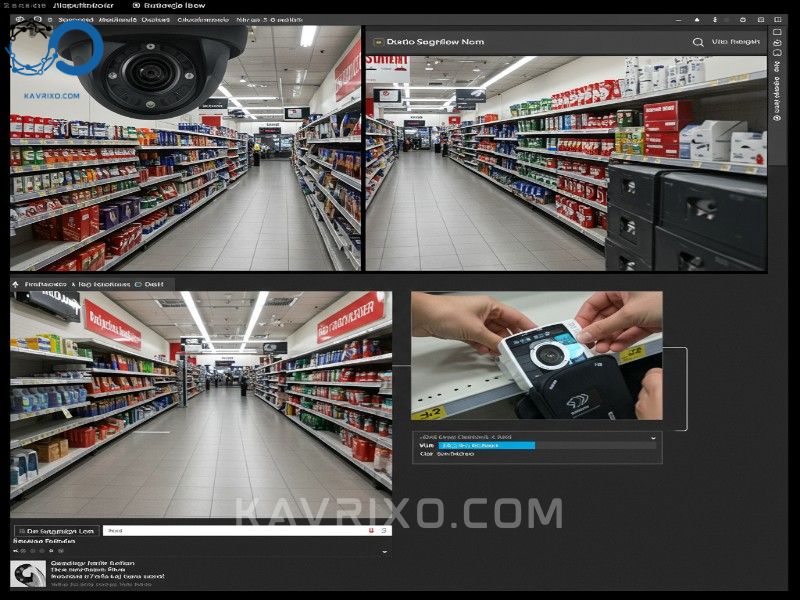
Intrusion Detection and Retail Alarm Systems
While video records events, intrusion detection actively alerts authorities or security monitoring centers the moment a perimeter breach occurs. This category includes the traditional security alarm system for shop settings, coupled with sophisticated environmental sensors.
Perimeter and Interior Protection
The foundation of intrusion detection involves securing the physical entry points. Door and window sensors trigger an alert when a breach occurs. Beyond the perimeter, interior detection devices provide the critical second layer:
- Motion Detectors: Passive infrared (PIR) sensors are standard, detecting changes in heat signatures (body movement). Advanced systems use dual-technology sensors (PIR and microwave) to reduce false alarms triggered by pets or environmental shifts.
- Glass Break Sensors: These specialized acoustic sensors listen for the unique frequency of shattering glass, providing an instant alert if a window is broken, often before the intruder enters the premises.
- Panic Buttons (Hold-Up Alarms): Essential for staff safety, these discreet buttons allow employees to silently summon help during a robbery or emergency without alerting the perpetrator.
Monitoring and Response
A high-quality retail alarm systems provider offers professional monitoring services. When an alarm is triggered, the monitoring center verifies the alert (often using video verification) and dispatches the appropriate authorities (police or fire department). The speed and reliability of this response are paramount to minimizing losses and ensuring staff safety.
Access Control and Inventory Management
Controlling who has access to sensitive areas—like stockrooms, server rooms, or cash offices—is crucial for combating internal theft, a major source of retail shrinkage. Modern access control goes beyond simple keys.
- Keyless Entry Systems: Keypads, RFID cards, or biometric scanners restrict entry to authorized personnel only. This creates an audit trail, documenting exactly who accessed which area and when. This accountability serves as a powerful deterrent.
- Electronic Article Surveillance (EAS): These are the ubiquitous security tags and pedestals found at store exits. EAS systems deter shoplifting by triggering an alarm if merchandise with an active tag passes through the detection gates. Choosing the right tag technology (RF, AM, or EM) depends on the inventory type and the store layout.
- Point-of-Sale (POS) Integration: Integrating the shop security system with the POS terminal allows managers to cross-reference transactions with security footage. If a suspicious return or void occurs, the system flags the transaction, and the manager can instantly review the corresponding video evidence to detect employee fraud.
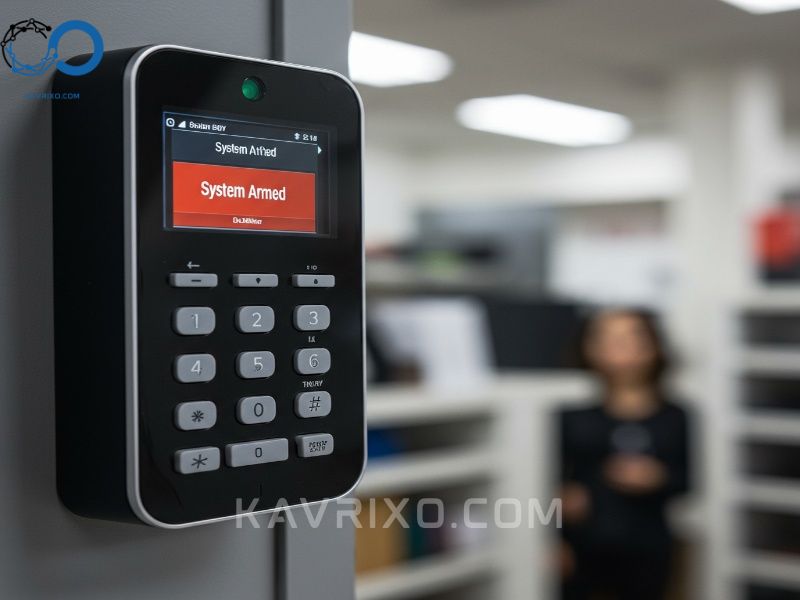
Physical Deterrents and Environmental Security
While technological solutions are vital, the physical integrity of the security store must also be addressed.
- Reinforced Doors and Locks: High-quality commercial-grade deadbolts and reinforced doors make forced entry significantly more difficult and time-consuming, increasing the likelihood that intruders will be deterred by the activated store alarm system.
- Security Lighting: Well-lit interiors and perimeters eliminate shadows and potential hiding spots, making unauthorized activity easier to spot, both for patrolling police and for security cameras.
- Fire and Environmental Monitoring: A comprehensive system includes smoke, heat, and carbon monoxide detectors. While not traditional theft deterrents, these devices protect the physical structure and valuable inventory from environmental disaster, offering an integrated approach to asset protection.
Tailoring Security to Your Retail Environment
The security needs of a small coffee shop are vastly different from those of a high-end electronics retailer. Effective implementation requires a risk assessment based on the specific type of inventory, location, and operational hours.
Small Boutiques vs. Large Department Stores
Scaling the Shop Security System
- Small Boutiques: Often prioritize simplicity and high visibility. A key focus is on perimeter security, quality CCTV (preferably cloud-based for easy access), and a reliable security alarm system for shop that is easy for staff to arm and disarm. Cost-effectiveness and ease of use are major factors here.
- Large Department Stores: Require complex, integrated systems. They need hundreds of cameras, sophisticated access control (often managed via centralized software), and advanced inventory tracking using RFID tags. The retail alarm systems must be zoned, allowing specific sections (e.g., jewelry counter, pharmacy) to remain armed even when other parts of the store are in use.
High-Value Inventory Considerations
Retailers dealing with easily portable, high-value items (electronics, jewelry, designer goods) face the highest risk of sophisticated theft.
- Secure Display Cases: Display cases should utilize shatter-resistant glass and integrated alarms that trigger if the case is opened improperly or tampered with.
- Tethering and Anti-Theft Devices: Products displayed publicly must be physically secured. Retractable tethers prevent “grab-and-run” theft, while specialized locking mechanisms protect phones and tablets.
- Inventory Auditing: Frequent, detailed inventory audits, supported by specialized counting shop security equipment, are essential to quickly identify discrepancies caused by theft or administrative error.
Integrating E-commerce and Physical Security
The lines between physical retail and e-commerce are blurring. Security must extend into the digital realm, especially regarding order fulfillment and “Click and Collect” procedures, which can be vulnerable to fraud if not properly vetted by the shop security system protocols.
- Secure Pickup Zones: Staff must verify customer identification against the order details before releasing merchandise, often using dedicated security cameras focused solely on the pickup counter to record the exchange.
- Data Protection: The security system must comply with data protection regulations, especially if customer data (including biometric access data) is stored.
Advanced Technologies Driving Modern Shop Security
The future of loss prevention is intrinsically linked to artificial intelligence (AI) and network connectivity. Advanced shop security systems leverage these technologies to move from reactive recording to proactive prediction and prevention.
AI-Powered Analytics and Behavioral Monitoring
AI is transforming how retailers use their surveillance footage. Instead of requiring human monitoring 24/7 (which is prone to error and distraction), AI software processes video data in real-time to identify anomalies.
- Suspicious Activity Detection: Algorithms can be trained to recognize patterns associated with shoplifting—such as lingering near a high-value display without engaging, carrying items into a blind spot, or attempts to tamper with EAS tags.
- Facial and Object Recognition: While privacy concerns must be addressed, some systems use facial recognition to identify known offenders or individuals previously banned from the premises. Object recognition can track specific high-value items, alerting staff if they leave their designated area without a corresponding POS transaction.
- Queue Management and Operational Insights: Beyond security, these analytics provide business value by tracking customer flow, measuring peak times, and evaluating staff deployment efficiency—demonstrating the dual benefit of modern shop security equipment.

Cloud-Based Monitoring and Remote Access
Cloud storage has revolutionized video management. It eliminates the need for bulky, on-site digital video recorders (DVRs) and protects footage from physical tampering or damage.
- Redundancy and Reliability: Even if an intruder damages the on-site equipment, the footage is already securely stored off-site, making cloud storage a critical component of a robust store alarm system.
- Scalability: Cloud systems are highly scalable, perfect for retailers planning expansion. Adding a new location simply means connecting new cameras to the existing cloud infrastructure without having to invest in an entirely new recording setup.
- Integration: Cloud platforms facilitate easier integration between the CCTV, the intrusion detection, and other operational software, creating a truly unified shop security system.
Biometrics and Advanced Access Verification
For sensitive back-of-house areas, biometrics (fingerprint, iris, or palm scanning) offer the highest level of assurance that only authorized individuals can access specific zones. This is especially important for financial institutions operating within retail environments or high-security stockrooms. Biometric data is virtually impossible to duplicate or share, significantly reducing the risk of internal collusion or unauthorized access.
The Implementation Process: From Assessment to Activation
Choosing the right shop security system requires a structured approach that prioritizes risk mitigation and regulatory compliance.
Conducting a Thorough Risk Assessment
Before purchasing any shop security equipment, a detailed risk assessment is mandatory. This should ideally be conducted by a professional security consultant who understands retail vulnerabilities.
- Identify High-Risk Areas: Where are cash transactions handled? Where are the most expensive products stored? Which areas have the highest foot traffic?
- Evaluate Existing Controls: Review current protocols, existing locks, lighting levels, and inventory procedures.
- Analyze Local Crime Data: Understand the common threats in your geographical area (e.g., smash-and-grab, delivery fraud, ORC).
- Define Security Objectives: Determine what the system must achieve (e.g., reduce internal theft by 50%, provide clear evidence for all external incidents, or meet specific insurance requirements).
This assessment determines the precise specifications required for your retail alarm systems and camera density.
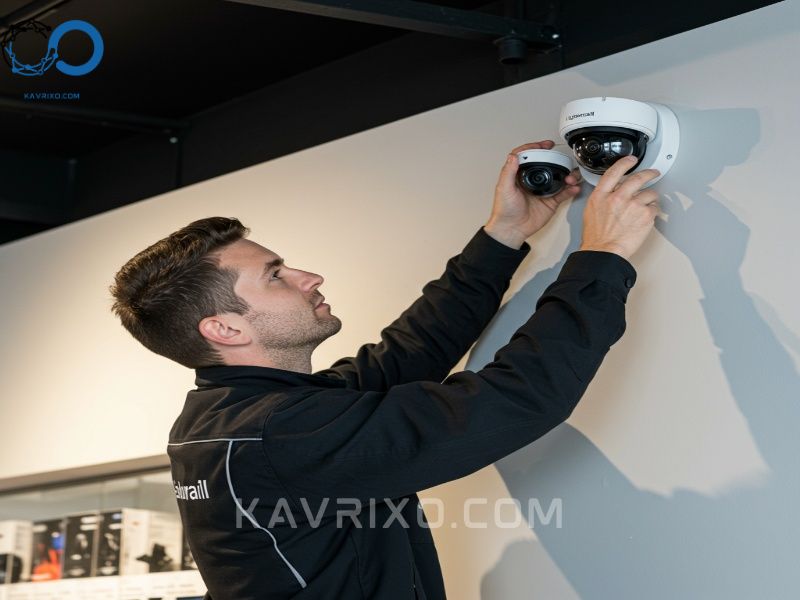
Professional Installation vs. DIY Solutions
While DIY kits are tempting for cost savings, professional installation is crucial for complex commercial environments.
- Optimal Placement and Cabling: Professional installers ensure cameras and sensors are placed optimally to minimize blind spots and maximize field of view, something often missed by non-experts. They also ensure discreet, secure cabling that is compliant with fire and safety codes.
- System Integration: Integrating different components—CCTV, access control, and the main store alarm system—requires specialized knowledge to ensure they communicate effectively and reliably.
- Compliance and Warranty: Professional installers ensure the system adheres to local ordinances regarding monitoring and response, and they provide warranties and ongoing maintenance support that DIY solutions lack.
Staff Training and Protocol Development (The Human Element)
Even the most technologically advanced shop security system will fail if staff are not properly trained. Employees are the first line of defense.
- Operating the System: All relevant staff must know how to properly arm and disarm the security alarm system for shop premises, handle false alarms, and utilize panic buttons.
- Loss Prevention Protocols: Training should cover procedures for handling suspicious behavior, what to do during a robbery (e.g., compliance, prioritizing safety), and how to use POS integration tools to flag potential internal fraud.
- Data Handling: Staff must understand the privacy implications of surveillance footage and who is authorized to view or share security data.
Maximizing ROI: Beyond Loss Prevention
While the primary goal of a shop security system is to prevent loss, the benefits extend far beyond simply catching thieves. A robust system delivers significant returns on investment (ROI) through multiple avenues.
Insurance Benefits and Liability Reduction
Many insurance carriers offer reduced premiums to retailers who implement certified, professionally monitored retail alarm systems and high-quality CCTV. This saving can offset a portion of the system’s cost. Furthermore, clear video evidence drastically reduces liability risks from spurious claims of slips, falls, or workplace incidents, safeguarding the business from costly litigation.
Enhancing Customer and Employee Confidence
A visible, well-maintained security store system signals to customers that management takes safety seriously. This creates a more comfortable shopping environment. For employees, knowing that they have reliable protection, easily accessible panic buttons, and documented monitoring procedures fosters greater confidence, potentially improving retention and job satisfaction.
Utilizing Security Data for Operational Efficiency
The data collected by advanced shop security equipment—such as people counting, heat mapping, and dwell time analysis—can be repurposed by the operations team.
- Merchandising Effectiveness: Analyzing camera footage can determine which displays attract the most attention and which areas of the store are ignored, optimizing layout and visual merchandising.
- Staffing Optimization: Foot traffic data derived from the security sensors helps managers schedule staff more effectively, ensuring adequate coverage during peak security risk hours and busy sales periods.
Future-Proofing Your Investment in Shop Security
Technology evolves rapidly. When selecting a shop security system, prioritize solutions that are modular, scalable, and built on open standards. This ensures that you can easily integrate future technologies (like better AI algorithms or faster network protocols) without having to replace the entire infrastructure. Regular maintenance, software updates, and periodic professional security audits are non-negotiable to ensure your defense remains effective against emerging threats.
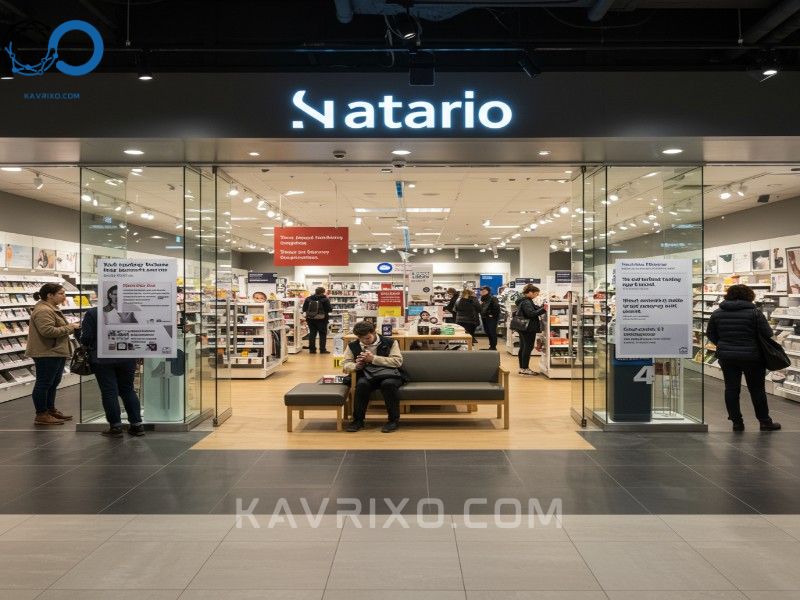
Conclusion: Securing Your Success with the Right Shop Security System
Protecting a retail business requires vigilance, strategy, and the right tools. A modern, integrated shop security system is far more than just a set of cameras and a noisy siren; it is a vital management tool that safeguards assets, enhances operational efficiency, and secures the future viability of your enterprise. By carefully selecting the right shop security equipment, integrating powerful retail alarm systems, and committing to thorough staff training, retailers can significantly mitigate risk and build a foundation for sustained success in a challenging commercial world. Investing in security today is investing in profitability tomorrow.
